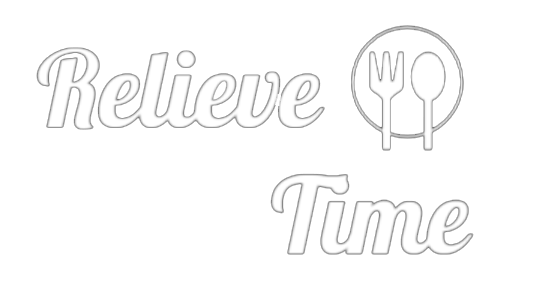Bartenders Are Putting These Four Disco-Era Cocktails Back on the Map
It’s no secret that the cocktails coming out of the 1970s and ‘80s had quite the bad rap. Vibrant in color, these drinks had a reputation for low-quality ingredients and generally unbalanced flavor profiles, so bartenders were quick to pivot away from them once the cocktail revolution rolled around.
But that doesn’t necessarily mean that some of them don’t deserve a second shot. What’s old can always be made new again. Just look at all the two-ingredient dive bar staples getting the high-brow treatment; or the Lychee Martini, which is back and more delicious than ever. Surely some of the drinks that dominated in the disco era can have the same comeback.
Check out four disco drinks deserving of a revamp below.
The Midori Sour
Japanese Midori first hit the market in the U.S. in 1978, and it did so in the most 1970s way imaginable: a party at Studio 54. Following its American debut, the sweet melon liqueur was widely used for the rest of the decade and into the ‘80s in flashy green drinks that bordered on cloying. The most popular of the bunch was easily the Midori Sour, which, back in the ‘70s before anybody knew any better, was predominantly made with sour mix. It’s understandable that consumers stopped drinking it once the sweet cocktail craze settled down.
But in 2012, Midori slowly started reentering the cocktail conversation. A reformulation saw the introduction of ingredients like Japanese Yubari and muskmelons, and saw the amount of artificial sugars reduced by half. And since this reformulation, Midori has experienced quite the resurgence, though the Midori Sour still lives a life in the shadows, and it’s about time that changed.
At The Up & Up in Manhattan’s Greenwich Village, a souped-up Midori Sour has been on the menu since 2016 and is widely beloved. The melon liqueur is combined with gin, lime cordial, lemon juice, and an egg white for a luscious, equal parts sweet and tart cocktail. Slightly fruity, herbal, and refreshing, the cocktail is a far cry from the Midori Sours of the ‘70s and perfectly encapsulates why this cocktail (with a little TLC), has some serious star power.
The Harvey Wallbanger
The Harvey Wallbanger in its original form is basically a Screwdriver with an added dash of Galliano. Made with vodka, Galliano, and orange juice, the Harvey Wallbanger is, in true disco drink fashion, a sweet cocktail. Galliano, an Italian liqueur dating back to 1896, contributes some of that sweetness, providing the cocktail with vanilla notes that transform it into something reminiscent of a Creamsicle. But slight tweaks can take this cocktail to new heights.
At Brooklyn’s Gage & Tollner, the steakhouse serves an elevated version of the Harvey Wallbanger that replaces the standard vodka base with gin. The botanical spirit is a much better complement to the herbal anise notes in Galliano, allowing the yellow liqueur to showcase more than just its sweeter qualities. Instead, the cocktail gets most of its sweetness from a single tablespoon of cane sugar, which brings a rich, molasses-like flavor. In a further diversion from the standard recipe, Gage & Tollner’s spec calls for 3 ounces of orange juice and a half-ounce of lemon juice, which adds brightness and cuts some of the sweetness.
When all the ingredients come together in a Collins glass expressed with orange oil, the Harvey Wallbanger transforms from something unstructured and out of balance to a bittersweet botanical marvel.
The Tequila Sunrise
While it may have been created in the 1930s, the Tequila Sunrise didn’t gain notoriety until the ‘70s, when the version of the drink we know today wound up in front of Mick Jagger. The Rolling Stones’ frontman’s affinity for the tequila, orange juice, and grenadine cocktail catapulted not just the drink’s popularity, but also put tequila on the map. Unfortunately, the common use of sub-par tequila, processed orange juice, and sugary grenadine eventually pushed the drink out of favor.
But over at Mr. Melo, bartender and co-owner Nikolas Vagenas is proving that it ought not to be forgotten. Vagenas gives the cocktail its red layer via an agave/grenadine hybrid syrup and Luxardo cherry syrup, which offer more herbal complexity than the artificial notes of store-bought grenadine. To further control the cocktail’s sweetness, acid-adjusted orange juice and two dashes of orange bitters are deployed for the top layer, providing the drink with vibrant citrus notes. Boozed up with blanco tequila and lengthened with a splash of soda water, it has all the refreshment of the original with much more finesse.
The Grasshopper
Cream-based cocktails ran rampant in the ‘70s and ‘80s, and among the most popular was the Grasshopper. The three-ingredient drink, made with crème de menthe, crème de cacao, and half-and-half, was typically enjoyed as an after-dinner treat thanks to its decadent, mint ice cream-like flavor. But the drink’s heaviness meant that it didn’t have much staying power once the cream craze came to a close.
Luckily, it doesn’t have to be such a dense cocktail, and the proof is at The Mothership in Milwaukee. The Grasshopper on offer there is entirely lactose-free, with soy creamer used in place of the original’s half-and-half, lightening the cocktail without sacrificing its dessert-like qualities. It’s also far boozier than the traditional spec, with Amaro Montenegro joining crème de cacao and housemade green crème de menthe at the cocktail’s base before an overproof rum float completes the build.
*Image retrieved from Tuan Nguyen via stock.adobe.com
The article Bartenders Are Putting These Four Disco-Era Cocktails Back on the Map appeared first on VinePair.
